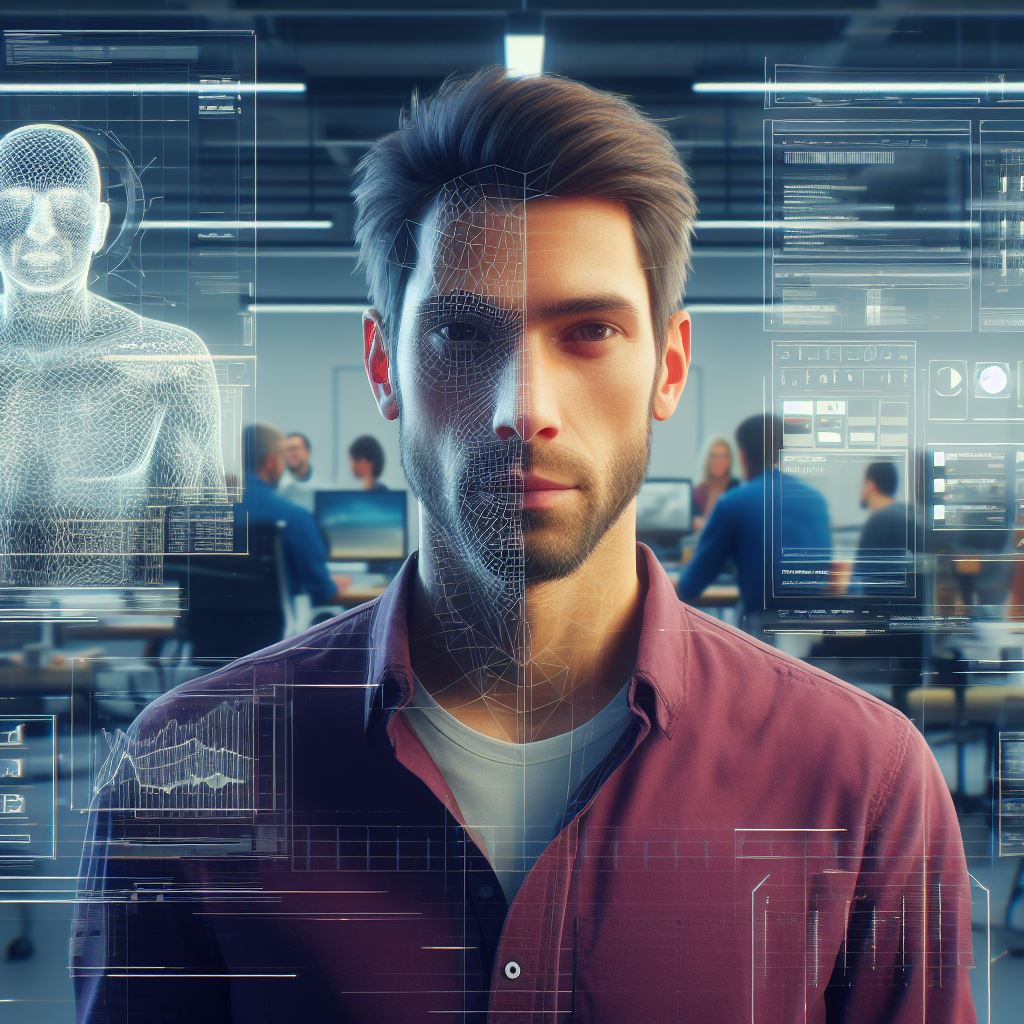Mastering 3D Animation in Unity: Tips and Tricks
Last Updated on October 17, 2023
Introduction
Unity is a well-known game development platform that offers a wide range of features and tools. It is widely popular among developers due to its user-friendly interface and versatility.
3D animation plays a crucial role in creating immersive and realistic gaming experiences in Unity. It brings characters, environments, and objects to life, enhancing the overall gameplay.
The importance of 3D animation in Unity cannot be overstated, as it allows developers to create engaging and interactive games that captivate players.
Whether it’s a character’s movement, environmental effects, or special effects, 3D animation adds depth and realism.
Furthermore, 3D animation in Unity finds applications beyond gaming. It is used in virtual reality (VR) and augmented reality (AR) applications, architectural visualization, product demos, and more.
By mastering 3D animation in Unity, developers gain the ability to create visually stunning games and simulations that leave a lasting impact on players.
This post will explore various tips and tricks to help you excel in this field.
Whether you are a beginner or an experienced developer, this post will provide valuable insights into Unity’s capabilities and the power of 3D animation.
Getting Started with Unity 3D Animation
Understanding the Unity interface
- Unity workspace and project structure provide an overview of the software and its organization.
- The Animation window in Unity is an essential tool for creating and editing animations.
Importing assets for animation
- Unity supports various file formats for importing assets, including images, audio files, and 3D models.
- Importing 3D models, textures, and audio files allows you to bring your assets into Unity.
- Organizing assets in the project hierarchy helps maintain an orderly workspace and easy access to resources.
Setting up a basic animation scene
- Create a new scene in Unity to start building your animation environment.
- Place objects in the scene to create the elements you want to animate.
- Configure cameras and lighting within the scene to set the atmosphere and enhance your animations.
In this section, we will dive into the essentials of getting started with 3D animation in Unity. Understanding the Unity interface is crucial for navigating through the software and accessing the necessary tools effectively.
The Unity workspace provides a user-friendly layout that allows you to customize your workspace according to your preferences.
The project structure helps you organize your assets and scripts, making it easier to manage large-scale projects.
One of the key components of Unity’s interface is the Animation window. This window enables you to create stunning animations by manipulating object properties over time.
It offers a range of features such as keyframe editing, timeline control, and curve editing.
Importing assets is an essential step in creating 3D animations. Unity supports various file formats, including image files, audio files, and 3D models.
Understanding the supported formats allows you to choose the appropriate assets for your animation project.
When importing assets into Unity, it is important to consider their organization in the project hierarchy.
By structuring assets logically, you can find and access them easily, ensuring a smooth workflow throughout the development process.
Read: Integrating Databases with Node-Webkit: A Tutorial
Key Principles of 3D Animation
Understanding animation keyframes
1. Definition and importance of keyframes
Animation keyframes are crucial for defining specific moments in time where changes occur in the animation’s properties, such as position, rotation, and scale.
They serve as anchor points that shape the animation.
2. Setting keyframes for object movements and transformations
To create fluid animations, animators set keyframes at intervals along the timeline to establish the desired positions and transformations of objects. Keyframes act as milestones that guide the animation process.
3. Utilizing easing functions for smoother animations
Easing functions enhance the flow and naturalness of animations by controlling the acceleration and deceleration of objects.
By utilizing easing functions, animators can create smoother and more appealing animation sequences.
Working with animation controllers
1. Overview of Animator controller in Unity
Animator controller is a powerful Unity tool used to manage and blend animations. It allows animators to create complex animation systems by defining animation states and transitions.
2. Creating animation states and transitions
Animation states represent various actions or poses that an object can take during the animation.
Transitions define how the animation switches between different states, allowing for seamless movement and dynamic transitions.
3. Blending animations for seamless transitions
Blending animations enables smooth transitioning between different animation states, creating realistic and seamless movements. Animators can control the weights and blending parameters to achieve desired effects.
Implementing physics-based animations
1. Overview of rigidbody and collider components
Rigidbody and collider components play crucial roles in creating physics-based animations.
Rigidbody allows objects to simulate realistic motion under the influence of forces, while colliders define the physical boundaries of objects.
2. Applying forces and constraints for realistic motion
By applying forces such as gravity, impulses, or user-defined forces, animators can simulate realistic motion in the animation. Constraints can also be used to limit object movements, adding another layer of realism.
3. Exploring rigidbody joints for complex interactions
Rigidbody joints connect multiple objects and enable complex interactions, such as hinges, springs, and constraints. Animators can utilize these joints to create intricate and dynamic physics-based animations.
Understanding key principles in 3D animation is essential for creating captivating and realistic animations in Unity.
By comprehending concepts like keyframes, animator controllers, and physics-based animations, animators can elevate their skills and bring their imagination to life in the virtual world.
Read: Top 10 Unity Plugins Every Developer Should Know

Advanced Techniques in Unity 3D Animation
Animating characters with inverse kinematics
Inverse kinematics (IK) is a powerful technique in Unity 3D animation that enables animators to create natural and realistic movements for characters.
By using IK solvers, characters can interact with their environment in a more dynamic and lifelike manner.
Introduction to IK solvers in Unity
To start utilizing IK in Unity, animators need to understand the concept of IK solvers. IK solvers are algorithms that calculate the position and rotation of a specific bone within a chain based on the position of a target.
Unity provides several built-in IK solvers, such as the CCDIK solver and the FABRIK solver.
Setting up IK chains for character animations
Once familiar with IK solvers, animators can set up IK chains for character animations.
IK chains are created by defining a hierarchy of bones and specifying the points where the end effector will interact with the environment.
By setting up proper IK chains, animators can create more natural movements, such as a character’s hand following an object or a foot stepping on uneven terrain.
Improving interaction and realism using IK
To further enhance the interaction and realism of character animations, IK can be used to improve the way characters interact with their environment.
For example, using IK, characters can grab objects, push doors, or control their center of gravity during complex movements.
This level of detail adds an extra layer of realism to character animations and improves the overall quality of the game or animation.
Working with blend shapes and facial animations
Blend shapes, also known as morph targets, are a technique used to create facial animations in Unity.
They allow animators to morph between different facial expressions or shapes by manipulating a set of predefined vertices.
Understanding blend shapes and their uses
To work with blend shapes, animators must first understand their uses. Blend shapes are commonly used for creating facial expressions, lip-syncing, and other deformations in character animations.
By defining a series of blend shapes, animators can easily change a character’s facial expression or phoneme shape during dialogue.
Creating facial expressions and lip-syncing
Creating facial expressions and lip-syncing using blend shapes involves sculpting or modeling different facial poses.
These poses are then linked to specific blend shapes in Unity.
By animating the weights of these blend shapes over time, animators can seamlessly transition between facial expressions or phonemes, resulting in more realistic character performances.
Incorporating blend shapes into character animations
Incorporating blend shapes into character animations not only enhances the visual quality but also adds depth to the character’s emotions.
By combining blend shapes with other animation techniques, such as IK or skeletal animation, animators can create more engaging and expressive characters.
Optimizing animation performance
Optimizing animation performance is crucial for achieving smooth and efficient gameplay or animation experiences. There are several techniques that animators can employ to optimize their animations in Unity.
Reducing unnecessary keyframes and animation data
One way to optimize animations is by reducing unnecessary keyframes and animation data. Animators should carefully review their animation curves and eliminate any unnecessary keyframes or redundant data.
By streamlining the animation data, animators can reduce file sizes and improve playback performance.
Utilizing animation compression techniques
Another optimization technique is utilizing animation compression. Unity provides various compression options for animation clips, such as optimizing for memory or runtime.
Animators can experiment with different compression settings to find the balance between performance and visual quality.
Additionally, using Unity’s animation compression formats, such as delta compression or compression based on error metrics, can further reduce the memory footprint of animations.
Implementing LOD (Level of Detail) for complex animations
Implementing LOD (Level of Detail) is another effective technique for optimizing complex animations. LOD allows animators to control the level of detail based on the distance between the character and the camera.
By reducing the complexity of the animation at a certain distance, animators can significantly improve the performance without sacrificing visual quality.
Mastering advanced techniques in Unity 3D animation is essential for creating professional-quality character animations.
Through understanding and utilizing IK, blend shapes, and optimization techniques, animators can elevate the realism and performance of their animations in Unity.
Read: Getting Started with Node-Webkit: A Comprehensive Guide
Tips and Tricks for Mastering 3D Animation in Unity
Utilizing animation events for added functionality
- Animation events are triggers within animations that can execute actions or behaviors.
- They can be used to synchronize audio, spawn particles, activate gameplay elements, and more.
- For example, an animation event can be used to play a sound effect when a character swings a sword.
Exploring available animation plugins and assets
- Unity offers a range of plugins that can enhance and streamline animation workflows.
- These plugins provide advanced features such as motion capture integration, procedural animation, and physics simulations.
- Third-party asset stores also offer a wide variety of animation assets that can be imported and used in Unity projects.
Utilizing scripting for custom animations and behaviors
- Scripting in Unity allows for the creation of custom animations and behaviors that go beyond the built-in animation system.
- By writing scripts, developers can create complex animation sequences, control character movements, and define unique behaviors.
- Examples of script-driven animations include procedural animation, AI-controlled animations, and interactive cutscenes.
By incorporating these tips and tricks into your 3D animation workflow, you can elevate your animation projects in Unity to new heights.
Read: Deploying Apache Cordova Apps to Various Platforms
Conclusion
This blog post highlighted the key points to master 3D animation in Unity.
We discussed the importance of planning and preparation, utilizing appropriate tools and plugins, and understanding animation principles.
It is crucial to practice and explore further in Unity to become proficient in 3D animation. With dedication and continuous learning, you can create stunning and immersive animations with Unity 3D.
So, get inspired, experiment, and push the boundaries of your creativity in Unity’s vast world of animation possibilities!


